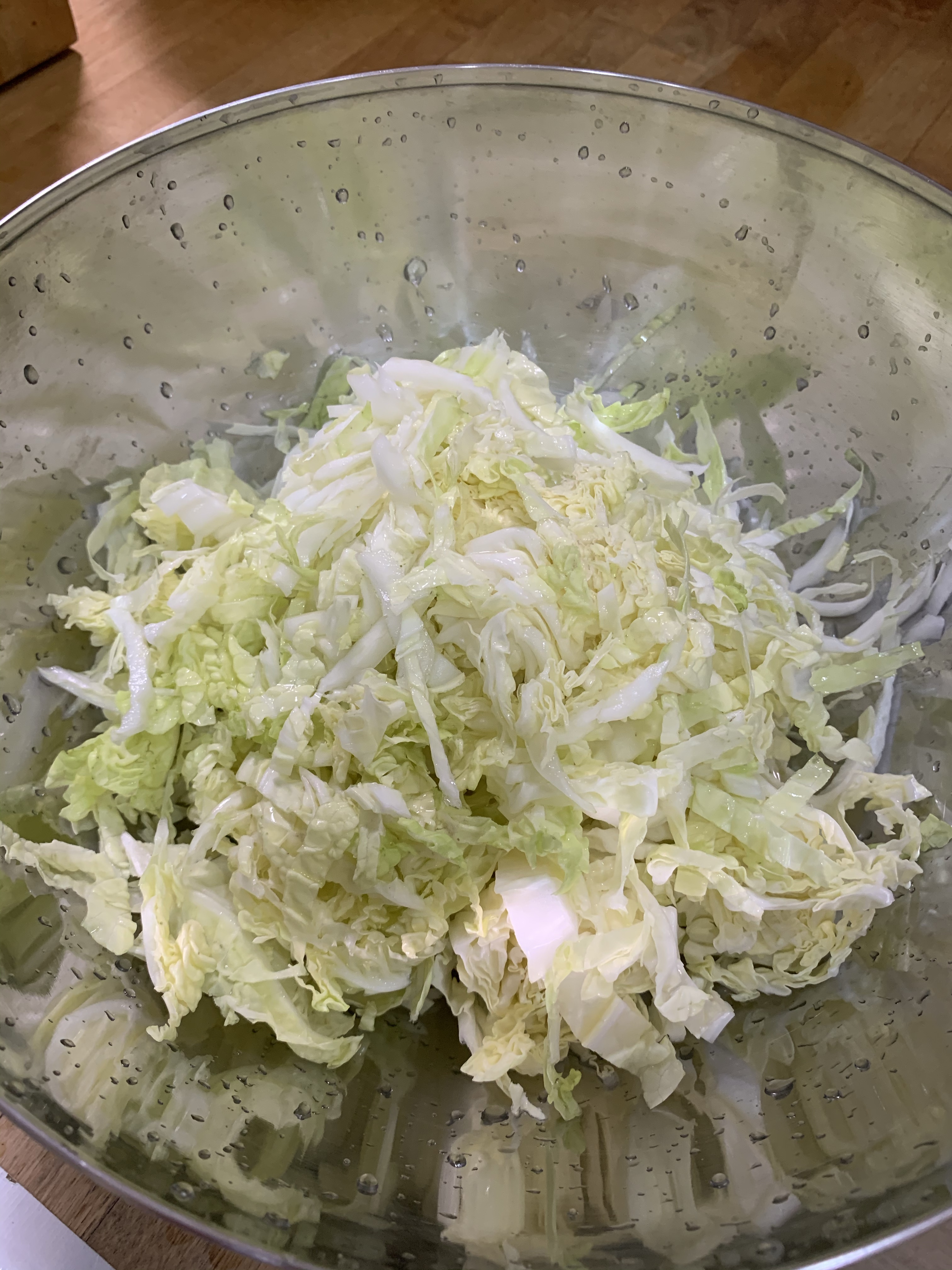Fermentation : Sauerkraut (fermented cabbage)
I have always wanted to make sauerkraut, but as usual, procrastination set in and before I knew it, it’s year 2020! I bought an organic cabbage yesterday. It cost a bomb… seriously. I have never paid so much for vegetables before… Maybe I should start growing cabbages at home. *ponder*
There it sat on my counter, staring at me, daring me to let it rot. I couldn’t stare it down, so I moved my ass and chopped it down. Ha da! And it’s actually surprisingly easy to do! So all of you out there, if you are still thinking (for the longest time ever) of starting but not, JUST DO IT!
Ingredients:
Cabbage (Organic if possible. Or else you will need to use vegetable wash to clean pesticide and yuckies off and also kill off the natural bacteria needed for fermentation)
Salt (I used Himalayan Pink Salt. That’s what I have at home anyway. You can use other mineral rich salts. I draw the line at refined salt.)
Before you start, make sure you have all the tools and containers ready. Wash them down with soap. Sterilise them if it makes you feel better.
Tools:
Fermentation jar (I use the Lock&Lock Fermentation Jar that comes with a one-way air lock. I prefer to use food grade glass jars due to the high acidity of the ferment and it’s going to stay in it for a while.)
A long stick or spoon (for packing the cabbage into the jar)
Mixing bowl
A weight (to make sure your cabbages stay under the brine. I used a glass jar filled with water.)
7 Easy Steps:
1. Wash your organic cabbage under running water.
2. Pull out the biggest leaf. Cut it down so that it can cover the cabbage slices.
2. Finely slice the rest of the cabbage.

3. Add in some salt over the shredded cabbage. Massage it in with your fingers. (Oh yes, please wash your hands and the parts of your arms that will touch the cabbage, if you are making a big batch. But don’t use antibacterial soap which will interfere with the fermentation process.) Slowly you will see a puddle of liquid polling at the bottom of the pool. Speaking of which, it’s quite therapeutic to massage the cabbage. *lol*

4. Taste the cabbage. If you feel that it’s not salty enough, add in more salt. If the brine is still very little, add in more salt and massage until there’s enough brine to cover the cabbage. If it’s already VERY salty but still not enough brine to cover the cabbage, you can add some lemon juice. If you have shredded your cabbage finely enough, you will usually have enough brine.
5. Grab the cabbage and start stuffing them down the fermentation jar. As you do that, use your stick or spoon to push the bits down to make sure there aren’t any air pockets. This stick that I bought from Daiso to roll my pastry dough is just nice for the job.

6. Once you have filled your jar, put your big cabbage leaf or leaves over them and press down so that all the bits remain below the brine. I use a clean glass jar, filled with water, to weigh down the leaves. I am buying some glass weights from Amazon. Hope they come soon! Then I capped it with my air lock lid. If you do not have this, you can cover it with a cloth and snap a rubberband over the opening. Or you can just cover the lid loosely over so that air can escape.


7. I put my precious jar in a dark corner of my kitchen. The best temperature for fermentation is between 20-24 degree C. So that the cabbage has time to ferment nicely and not turn out to be too tart.

How do you know if it’s done? Typically, it’s done if it reaches 4.6pH or lower. I keep a stack of ph paper at home to test for new ferments. Usually for old ferments, I would know the estimated amount of time. Alternatively, do the eye-taste-smell-touch test, which I usually do!
Eye – should look a little yellowish
Taste – nicely sour and a little picklelike (if there’s such a word), but not to the extent of becoming vinegar….
Smell – Sour
Touch – firm or slightly soft but not slimy. Slimy = bad news
Once you feel that the ferment is ready, you can bottle them and keep them in the fridge to hibernate the bacteria so that you can stop the fermentation process.

The best thing is – it puts good microbes into your body which boosts your immune system which is extremely important during times like this. Take that, Coronavirus!!! AND most importantly, you will have some food at home and you don’t have to fight with the long queues of hoarders at the supermarkets!! Right now, the supermarkets are the most dangerous places in Singapore – what with the long queues and close proximity to dunno-who-is-already-infected.
Besides, I’m trying to work in more fermented food into our diets as these prove to be beneficial to my 宝贝 who is battling the eczema monster!!